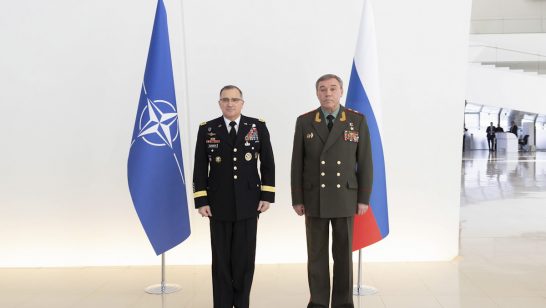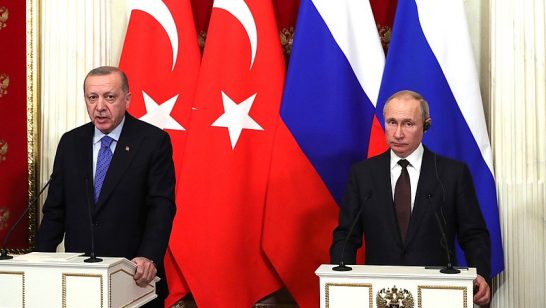
The decline of neutrality in world politics has been proclaimed several times over the past century. In the 1930s, Nicolas Politis thought the Great War had “dealt the death blow to neutrality” because “it showed the impossibility of neutrals escaping the effects of hostilities.” Similar arguments were made after the Second World War, the Cold War, and most recently, about the Russo-Ukrainian war. Some have regarded Finland and Sweden’s recent decision to join NATO as another nail in the coffin of neutrality. Yet there have always been voices defending neutrality politics and neutrality law, arguing there would be new life in these old concepts. In a new book I co-edited, Neutrality Beyond the Cold: Neutral States and the Post-Cold War International System (Lexington Books, 2022), fifteen authors update this debate.
Some have regarded Finland and Sweden’s recent decision to join NATO as another nail in the coffin of neutrality. Pascal Lottaz
Neutrality is often defined in its meaning under international law as the legal status arising from the abstention of a state from all participation in a war between other states, the maintenance of an attitude of impartiality toward the belligerents, and the recognition by the belligerents of this abstention and impartiality. However, as the tragedy of Ukraine shows, neutrality sporadically makes a comeback in international politics under different meanings, too. The “neutralization” of Ukraine—here referring to the intentional exclusion of the state from any hard security alliances by treaty agreement—has been seriously discussed since 2014 by thinkers as diverse as Noam Chomsky, Henry Kissinger, John Mearsheimer, and Anatol Lieven, who held that a neutral Ukraine would be the most realistic way to settle the conflict before it became an all-out war. Political scientist Heinz Gärtner, one of the co-editors of Neutral Beyond the Cold, also argued for years that there were only two realistic scenarios for ending the war in the Donbas: either permanent neutrality or permanent division. Unfortunately, it looks as if the latter won out. The most serious and realistic efforts to end the war through a neutrality agreement failed in late March 2022—with all sides blaming each other for the diplomatic impasse.
As the book went to press in January 2022, its narratives end before the Russian invasion, no doubt a watershed moment in international relations. It might well be that the 30 years the book constantly refers to as the “Post-Cold War” will soon be renamed to something like “the Long Détente.” However, the historical evaluation of the period between the dissolution of the Soviet Union and the war in Ukraine remains important.
There is no common understanding of what neutrality in the twenty-first century means. It is a fuzzy concept, and not just for states. Pascal Lottaz
In part one, the book analyses neutrality discourse concerning international organisations, diplomacy, and academic theory. In part two, various authors discuss neutrality-related policy developments in Eurasian countries. They illustrate that there is no common understanding of what neutrality in the twenty-first century means. It is a fuzzy concept, and not just for states. Angela Kane, a former UN High Representative for Disarmament Affairs, discusses how the United Nations—an institution that used to be hostile to neutrality—became reliant on the concept for some of its activities, most importantly for peacekeeping, and has come to endorse neutrality officially. Similarly, there has been an ongoing debate among the members of the Association of Southeast Asian Nations (ASEAN) for a neutral status of their block, either in the form of a “Zone of Peace, Freedom, and Neutrality” or through the Nonaligned Movement.
Other contributors contemplate neutrality theory and strategies in realist, liberal, or idealist terms, like the reciprocal relationship between geopolitics and neutral states or neutrality as a small-state strategy to maintain autonomy and identity in a world dominated by great powers. These different perspectives show how flexible neutrality discourse is. One chapter, for example, tries to reconcile Belarus’ “de facto neutrality” (as Minsk used to call it) with the country’s commitment to a tight alliance with Russia. In another chapter, the central Asian country Turkmenistan is explored. Ranking below North Korea on the Freedom House Index, Turkmenistan is a repressive dictatorship, but it is also the most vocal defender and promoter of neutrality worldwide. It was Turkmenistan, not Switzerland or Austria, that convinced the UN to officially declare 12th December the International Day of Neutrality and is one of the only countries in the world to commemorate it. Neutrality has become part of its national identity and the core of its state-building project, implemented by an iron fist. The example shows that this strategy has worked—at least to the degree that the international community does not dispute Turkmen neutrality, showing that states do not need to be democratic or humanitarian to successfully claim neutrality.
More traditional cases of neutrality are also discussed with an analysis of Serbia, Moldova, and Mongolia which all, in one way or another, are geopolitically squeezed. Outer Mongolia has been a military buffer between China and Russia (or the USSR) for over 300 years. The chapter argues that Ulaanbaatar’s turn to neutrality politics after 1991 was a rational choice based on straightforward state interests. In Serbia, the book shows how neutrality discourse has mostly been the result of election cycles. While Yugoslavia was famously nonaligned during the Cold War, Belgrade’s modern “military neutrality policy” is the result of internal political friction. Most Serbs support EU accession but are also strongly opposed to NATO—due to the alliance’s illegal bombing of Serbia during the Yugoslav wars and its role in the secession of Kosovo. Further east, Moldova is also caught in a national dilemma with its breakaway region of Transnistria (which declared sovereignty from Moldova in 1990, even before the dissolution of the USSR) and several linguistic minorities who are at odds over the country’s foreign policy. This led to a neutrality policy that continues today.
The book also shows how not all attempts at neutral solutions are successful. Besides the failure of Ukrainian neutrality to materialize, Afghanistan is another unsuccessful example. Since the 19th century, neutrality has been either an official policy or the only viable option to pacify internal and external factions in Afghanistan. Yet, these neutralist solutions either fell on deaf ears or, when they did become official foreign policy (in the 19th and 20th centuries), collapsed together with the state either because of external intervention or internal riots.
The list of cases touched on here is not exhaustive, but they show how ideas, practices, and neutrality laws are still a staple of international politics. Compared to the late nineteenth and early twentieth centuries, the concept of neutrality has evolved. It became less concrete, less law-based, and more political. However, as Eurasian politics is once more in a state of confrontation, with hot wars raging in Ukraine, Nagorno-Karabakh, Syria, and Yemen, and a New Cold War between Russia and the West, a return to a realist, law-based neutrality, and a new international consensus on what that means would be warranted to deescalate the current security crisis and preserve peace in the emerging multipolar world.
The opinions articulated above represent the views of the author and do not necessarily reflect the position of the European Leadership Network or all of its members. The ELN’s aim is to encourage debates that will help develop Europe’s capacity to address the pressing foreign, defence, and security policy challenges of our time.
Image: Wikimedia, Lady Anu



